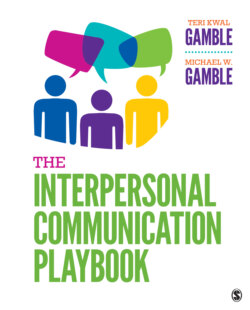Читать книгу The Interpersonal Communication Playbook - Teri Kwal Gamble - Страница 117
На сайте Литреса книга снята с продажи.
The Perception Process in Action
ОглавлениеPerception is the process we use to make sense of experience. Through perception, we give meaning to the world, making it our own:
We actively select or choose to focus on relatively few stimuli.
We organize or give order to the stimuli.
We interpret sensory data or explain what we have selected and organized.
We remember what we have observed.
We respond.
We use our perceptual powers to decide what people are like and to give their behavior meaning. While waiting to order in a restaurant, for example, we may observe two people having lunch, size them up as businesspeople, and decide that they are meeting to close an important deal. When engaging in interpersonal perception, we also ask questions about others regarding their relationship to us, draw conclusions about their personalities, and make judgments about their intentions.
According to uncertainty reduction theory, we monitor the social environment to learn more about each other and reduce our uncertainty regarding another person’s intentions.20 We seek such information because if we lack it, we could fail in our efforts to predict behavior and its consequences. Thus, upon meeting someone, we will choose certain cues to attend to. We might note, for example, that the person is female, older than we are, speaks with a foreign accent, is well groomed, and seems approachable. Our next step would be to organize the information we have gathered so that we are able to store it and/or use it. This is followed by an effort to evaluate and interpret the meaning of our perceptions, which are placed in our memory for retrieval whenever we need or choose to respond.
